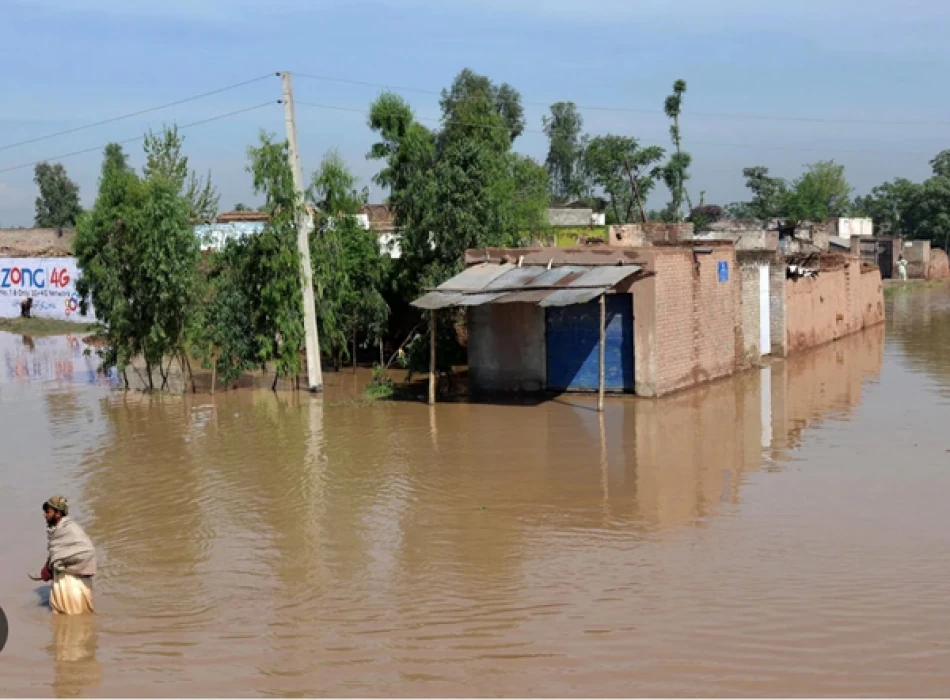
Devastating Floods Claim Lives in Pakistan's Northwest: Authorities Grapple with Aftermath
Pakistan's Climate Crisis Deepens as Flash Floods Kill 220 in Northwest Region
Pakistan faces another devastating reminder of its extreme vulnerability to climate change as torrential rains and flash floods in the country's mountainous northwest have claimed at least 220 lives, with rescue teams still searching for survivors. The disaster in Khyber Pakhtunkhwa province underscores Pakistan's position as one of the world's most climate-vulnerable nations, just two years after catastrophic floods submerged one-third of the country.
Rescue Operations Continue in Remote Mountain Areas
Emergency services spokesman Muhammad Sohail confirmed that rescue workers have recovered 63 additional bodies from the mountainous Buner district in Khyber Pakhtunkhwa province. Hundreds of rescue personnel continue searching for survivors after Friday's torrential downpours and powerful storms triggered devastating flash floods that swept away numerous homes.
The challenging terrain of Pakistan's northwest frontier complicates rescue efforts, with many affected areas accessible only by foot or helicopter. The mountainous geography that makes these regions particularly scenic also amplifies flood risks, as steep valleys channel rainwater into deadly torrents within minutes.
Broader Regional Impact Reveals Systemic Vulnerability
The Provincial Disaster Management Authority reports that at least 351 people have died in rain-related incidents across Khyber Pakhtunkhwa and the northern Gilgit-Baltistan region this week alone. This toll reflects Pakistan's broader struggle with extreme weather events that have become increasingly frequent and severe.
Pakistan's Climate Change Reality
These floods arrive as Pakistan continues recovering from the 2022 mega-floods that killed over 1,700 people and caused $30 billion in damages. Despite contributing less than 1% of global greenhouse gas emissions, Pakistan ranks among the top 10 countries most affected by climate change according to the Global Climate Risk Index.
The country's geography makes it particularly susceptible to extreme weather: the Indus River system drains through the entire country, while the northern regions contain over 7,000 glaciers that are melting at accelerating rates due to rising temperatures.
Economic and Development Implications
Recurring flood disasters strain Pakistan's already fragile economy and infrastructure development efforts. The country allocated significant resources to post-2022 flood reconstruction, but repeated extreme weather events create a cycle where recovery funds are constantly redirected to emergency response rather than long-term resilience building.
International development experts note that Pakistan's experience illustrates the disproportionate impact of climate change on developing nations. While wealthier countries like the Netherlands have invested billions in sophisticated flood management systems, Pakistan lacks the financial resources for comprehensive climate adaptation infrastructure.
Regional Context and Global Patterns
Pakistan's floods reflect broader patterns affecting South Asia's monsoon regions. Bangladesh, India, and Nepal have all experienced increasingly erratic and intense rainfall patterns, but Pakistan's combination of glacial melt, monsoon variability, and limited infrastructure creates particularly deadly conditions.
The timing and intensity of these floods also align with global climate models predicting more frequent extreme precipitation events in the region. This makes Pakistan's disaster a preview of challenges facing other climate-vulnerable nations worldwide.
 Layla Al Mansoori
Layla Al Mansoori







